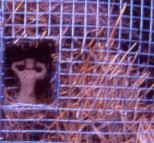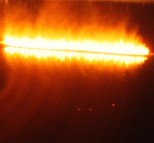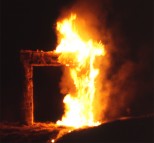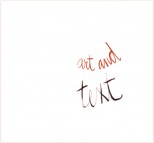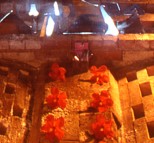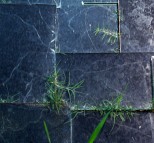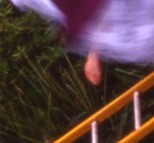'Illumination Series: The Oven', a series of site specific installations, Bligh Voller Nield Residency, Brisbane, 1998.
Bligh, Voller, Nield, Residency
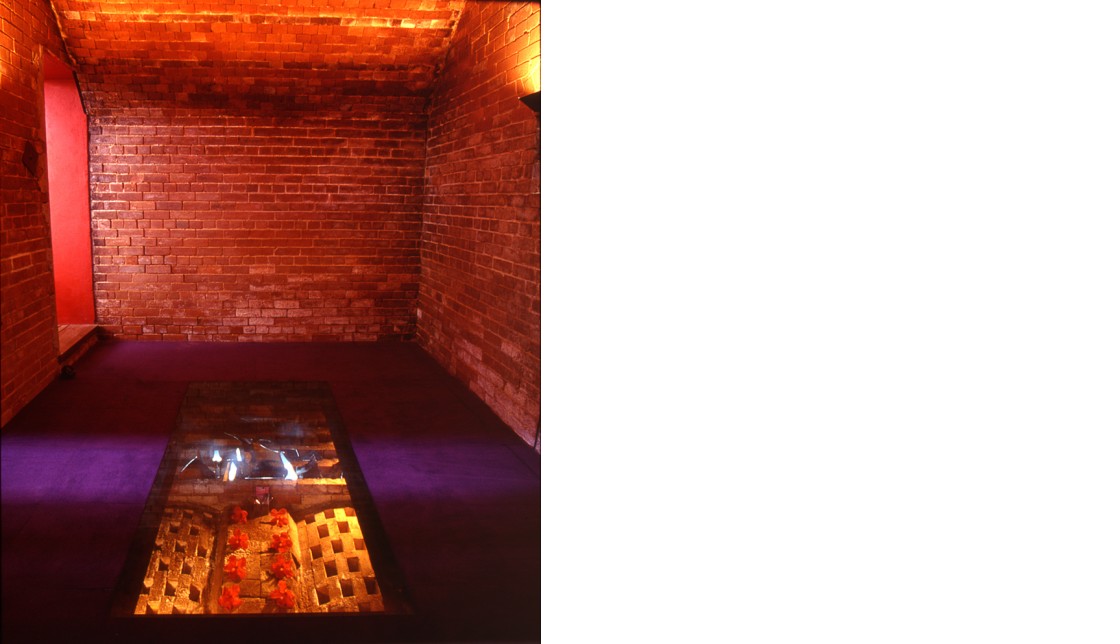
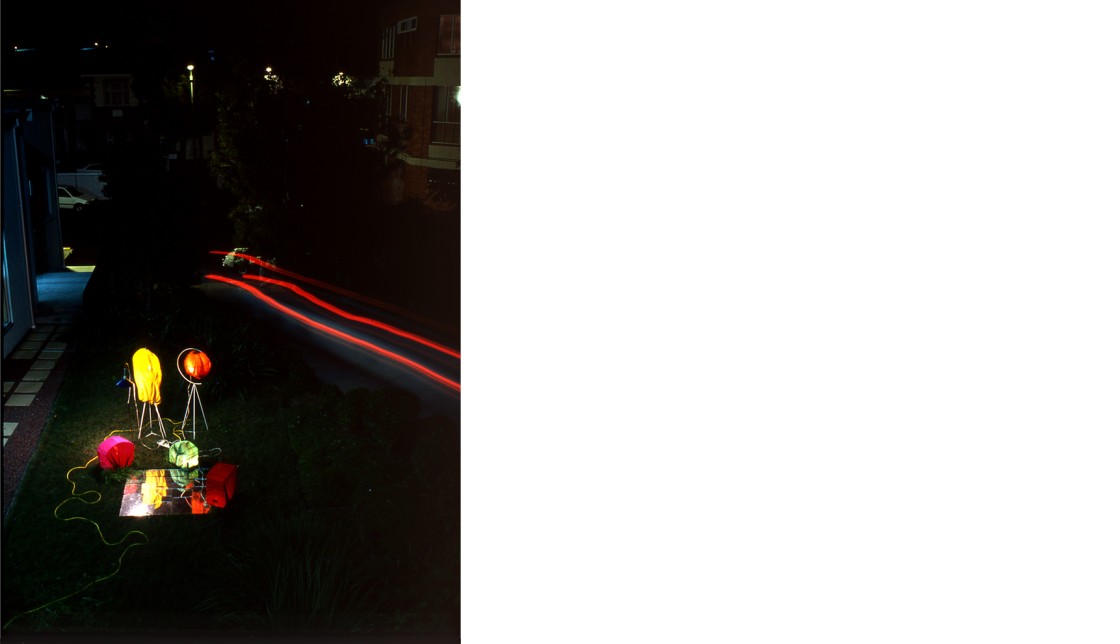
'Illumination Series: Nightscape', a series of site specific installations, Bligh Voller Nield Residency, Brisbane, 1998.
Photograph David Sandison.
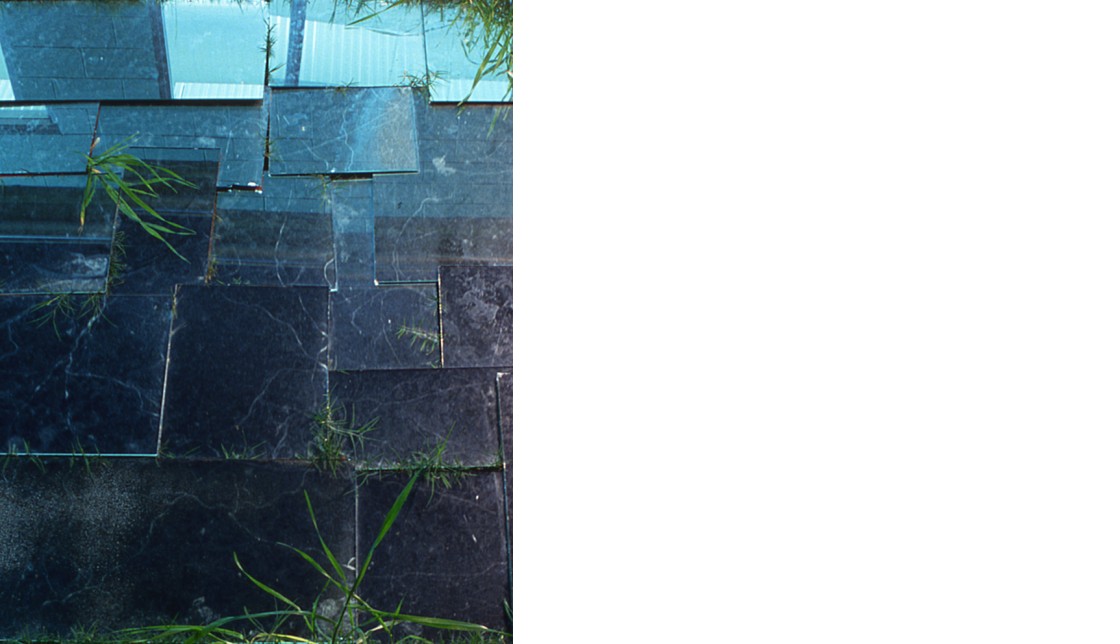
'Illumination Series: Landscape', a series of site specific installations, Bligh Voller Nield Residency, Brisbane, 1998.

'Forbidden Door', Installation and Performance in the Landscape, Bligh Voller Nield Residency, Brisbane, 1998.
Photograph David Sandison.
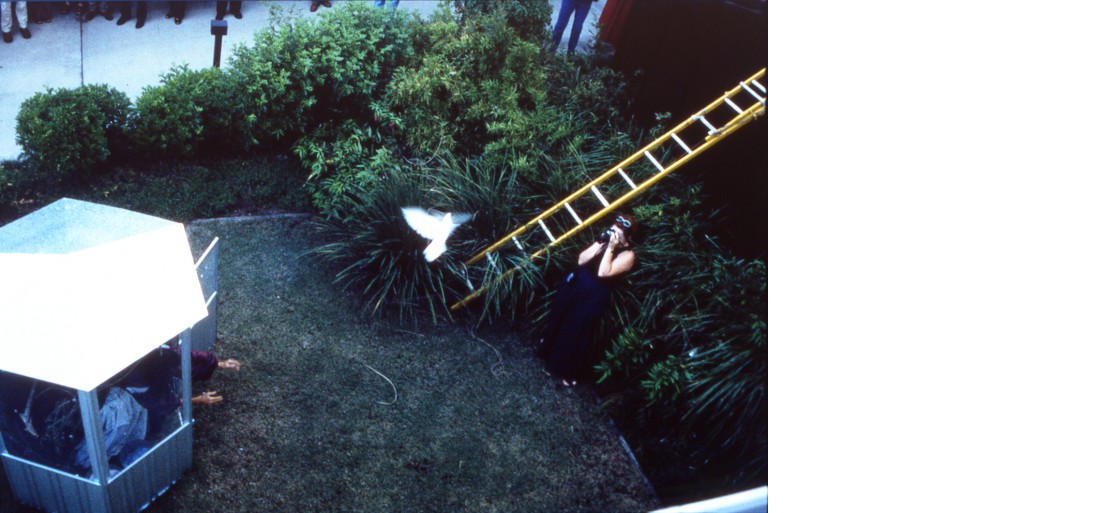
'Forbidden Door', Installation and Performance in the Landscape, Bligh Voller Nield Residency, Brisbane, 1998.
Photograph Matt Dabrowski.
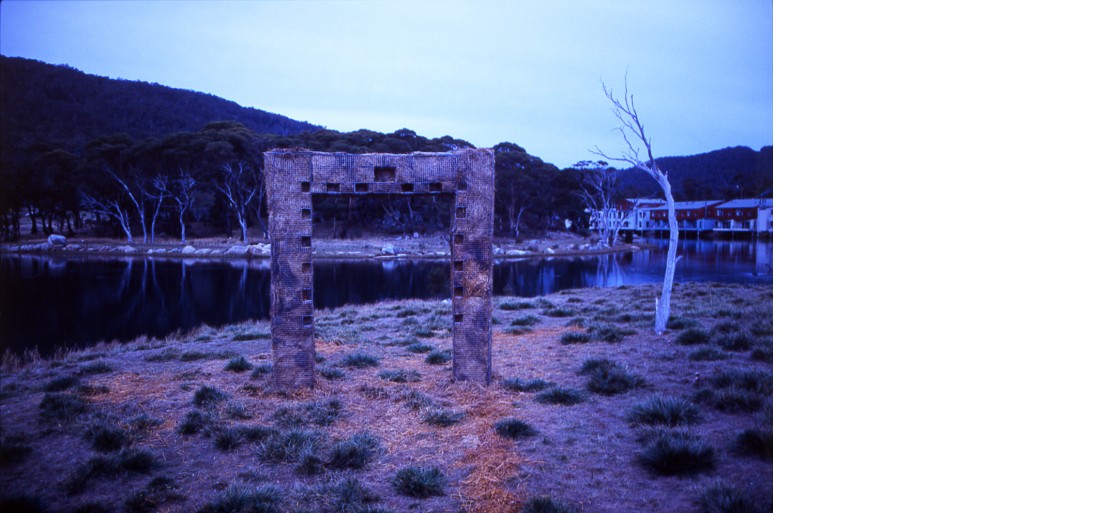
'Enki's Door', Installation and Performance in the Landscape, Lake Crackenback, ACT, 1998.
Bligh Voller Nield Residency, National Conference.
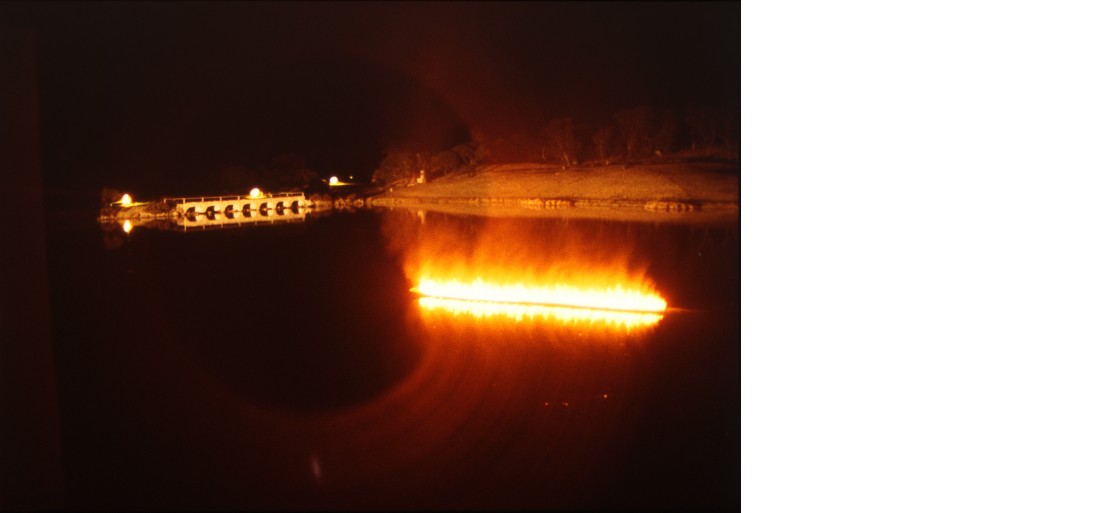
'Enki's Door', Installation and Performance in the Landscape, Lake Crackenback, ACT, 1998.
Detail of fire crossing the water. Bligh Voller Nield Residency, National Conference.

'Enki's Door', Installation and Performance in the Landscape, Lake Crackenback, ACT, 1998.
Bligh Voller Nield Residency, National Conference.
Bligh Voller Nield Residency, 1998.
In 1998 I was awarded a residency with BlighVoller Nield (BVN) architects. This was supported by Arts Queensland and was the first of its kind. The project was enfolded into my doctoral program, thus I entered the residency as artist and researcher. As with the Besozzo Residency, the concept of working with and from life was incorporated by framing the residency as an evolving socio-spatial artwork in which they were all collaborators in producing ‘a temporal object, which evolves over time’. On the other hand, BVN communicated an expectation that I would function as catalyst, educator, entertainer, collaborator on architectural projects, and artist working on her own work. My concern was to demonstrate an alternative and expanded perception of the artist to the one then held at BVN.
Shane Thompson (then principle of the firm) saw the benefit of the residency as an ‘exposure to alternative ways of making ideas...’. It was a fairly open brief. Yet in spite of this apparent openness the firm retained a romantic, modernist concept of the artist as probably a painter, a self aware, autonomous being, a provocateur, who is emotionally expressive and who acts outside the bounds of the normal codes and conventions of the culture. I was to be the other to their constrained, tamed and disciplined practice. And my mere presence was the attractor to their own capacity to engage this aspect of themselves.
During the residency I collaborated on a number of projects. I also produced an ongoing series of ‘installations’ or ‘events’ that erupted at varying times and in various sites throughout the office. The ‘Illumination Series’ emerged from this process. The installation and performance, ‘Enki’s Door’ 1998 was a one-off event for the BVN National Conference at Lake Crackenback, ACT. It was based on the Sumerian myth of Innana, and her descent into the underworld. Similar to the Hades myth of Western culture, the story of the descent (the cycle of death and renewal) is identified with creativity. Innana's story differs from Western tradition in that it encompasses the concept of a non-judgemental aspect of the self.
I constructed a portal of steel mesh and straw on an island in the Lake. The architects were asked to form a clay figure and the write what they desired most of their life/future. The clay figures were placed in the niches of the straw portal. The messages were offered to the ‘ferryman’ as coinage. They were the material that started the fire that travelled across the water to the island, then over the ground to the portal. The figures were transformed in the fire and returned to the architects the next day. Some of the architects rowed out on the lake and returned them to depths.
